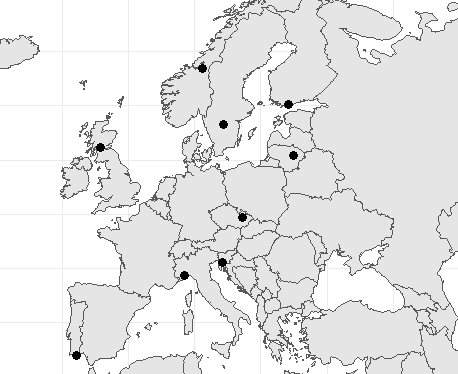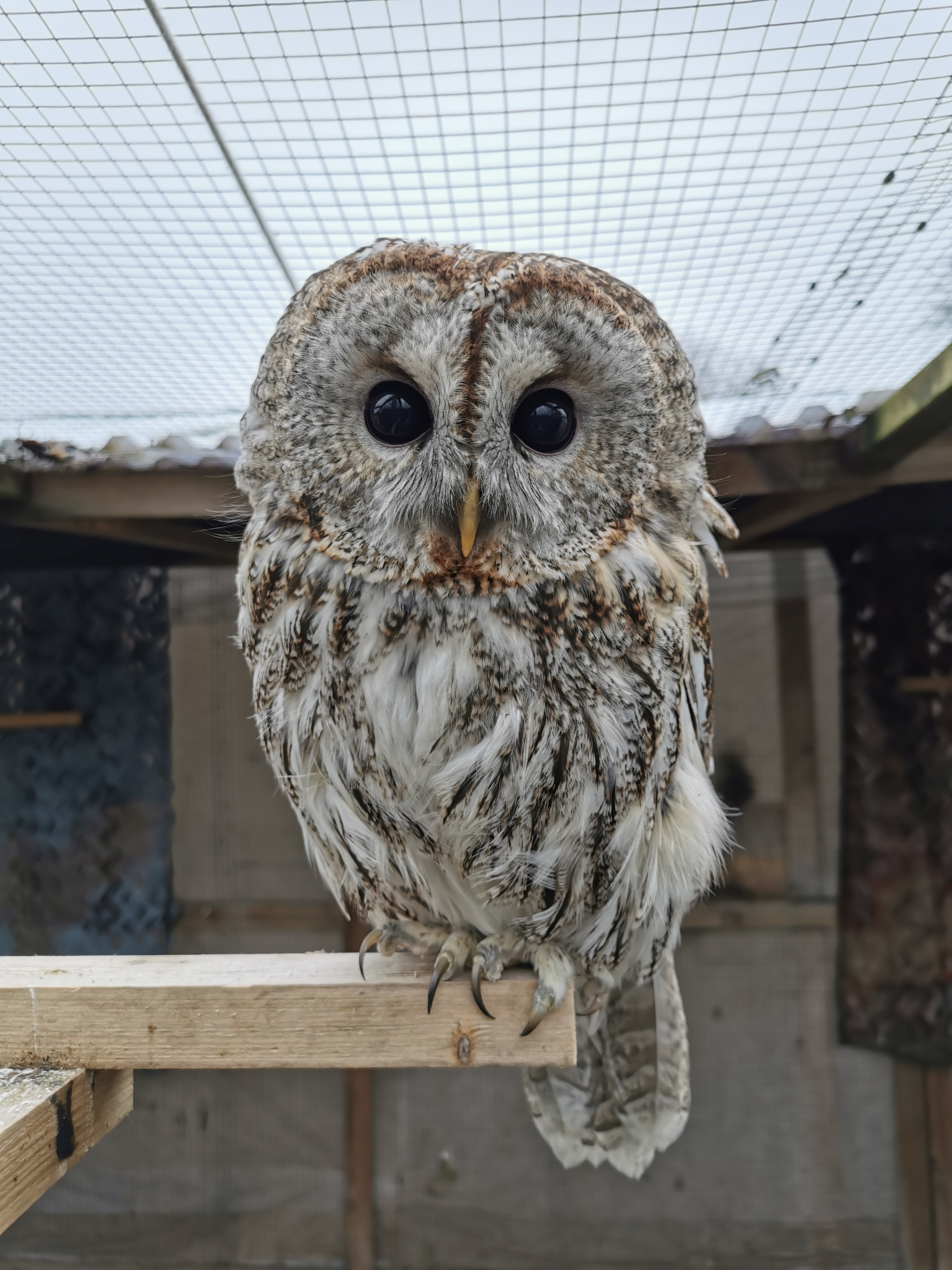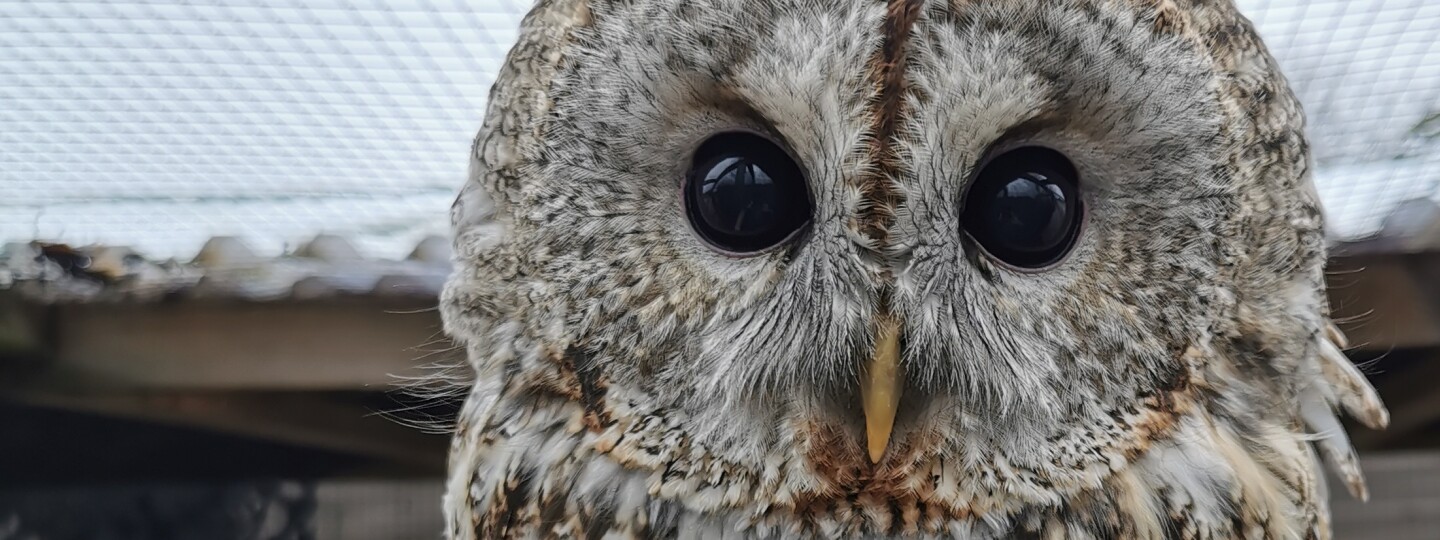A doctoral study from the University of Turku has unveiled how colour morphs in tawny owls (Strix aluco) adapt to shifting environmental conditions. MSc Charlotte Perrault explores how grey and brown tawny owl morphs navigate the challenges posed by changing snow cover and temperature variations in northern Europe.
Climate change is affecting the environment, especially in the north, where snowy winters are becoming less common. This change in the landscape affects animals that are adapted to their habitat and rely on camouflage and insulation to survive. Prey animals rely on camouflage to stay hidden from predators, but predators also count on their camouflage abilities to avoid being spotted by their prey when hunting.
When the animals’ environment is changing due to climate change, the animals’ survival is also expected to change.
Tawny owls (Strix aluco), a species with two distinct colour morphs, grey and brown. These colour morphs provide a compelling model to investigate these impacts. The changing climate raises questions about how these morphs adapt to varying environmental conditions, particularly the role of camouflage and insulation in their survival.
It is already known that grey owls have a camouflage advantage when there is snow in the environment compared to brown owls which are easier to detect in the snow from a human perspective. Grey owls also have a higher survival in snowy winters compared to brown owls. So, what factors could explain this survival difference between the two colours of tawny owls?
 Charlotte Perrault holding a grey tawny owl. Photo: Charlotte Perrault.
Charlotte Perrault holding a grey tawny owl. Photo: Charlotte Perrault.
Charlotte Perrault studied the behaviour and the insulation of tawny owls in different environmental conditions. The research highlights the complex interplay between genetics, behaviour, and climate change.
First, the behavioural test showed that when the tawny owls were placed in a new environment, neither brown or grey owls showed clear background matching, but the brown owls were choosing more often to sit in an open area.
“This suggests they are bolder than the grey owls since they are choosing a riskier resting place. By choosing the riskier resting place, brown owls are exposing themselves to potential predators and mobbers. This difference in the use of space in a novel habitat could explain the difference of survival observed in harsh winters in Finland.
Their camouflage efficiency was studied by observing the behaviour of small passerines which are used to harass owls when they are resting during the day. Both coloured owls were harassed as much, but the prey mobbing behaviors changed with environmental conditions. Birds harassed brown owls more often in snowy conditions and harassed grey owls more when there was no snow. The owl's colour therefore affected the extent to which its rest was disturbed under different environmental conditions.
These findings highlight how climate-driven shifts in snow cover may alter the dynamics between the colour morphs.
“Grey owls, historically advantaged in snowy climates, might see reduced survival benefits with milder winters, potentially impacting tawny owl population structures, “ says Perrault.
Finally, the insulation properties of tawny owls’ feathers was studied from nine populations dispatched across Europe. While feather insulation changed according to the location of the owl populations within Europe, the colour of the owl did not make a difference. This may help maintain different colour morphs in the population.

The insulation properties of the feathers were studied in nine owl populations across Europe
The differential survival strategies of these morphs underline the intricate balance between environmental adaptations and genetic predispositions.
“Understanding the interplay between behaviour, camouflage, thermal insulation, and environmental change is crucial for predicting the future of these polymorphic species in a rapidly changing world," says Perrault.

Grey Tawny owl pictured in an experimental room, that was used in the study. Photo: Charlotte Perrault.
***
MSc Charlotte Perrault defends the dissertation in Biology titled “An exploration of ecological processes underlying fitness differences in colour polymorphic tawny owls” at the University of Turku on 31 January 2025 at 12.00 (University of Turku, Natura, lecture hall IX, Turku).
Opponent: Associate professor Rose Thorogood (University of Helsinki)
Custos: Professor Jon Brommer (University of Turku)
Doctoral Dissertation at UTUPub
The audience can participate in the defence by remote access




